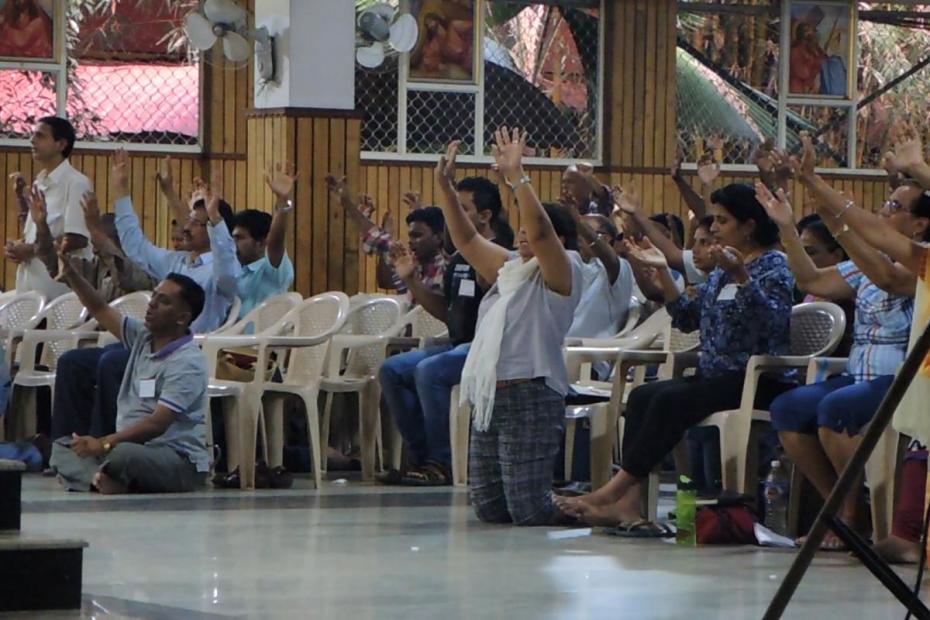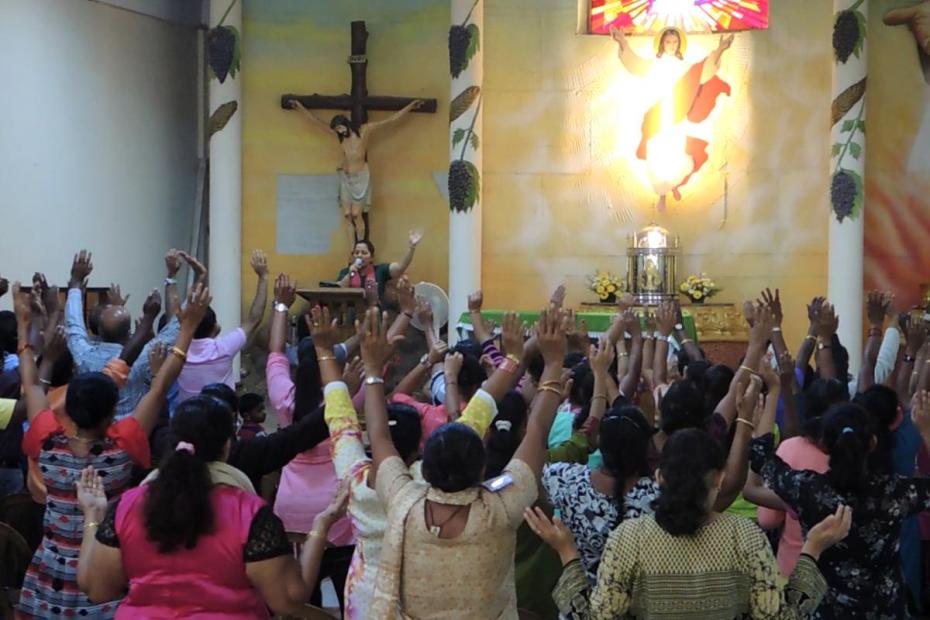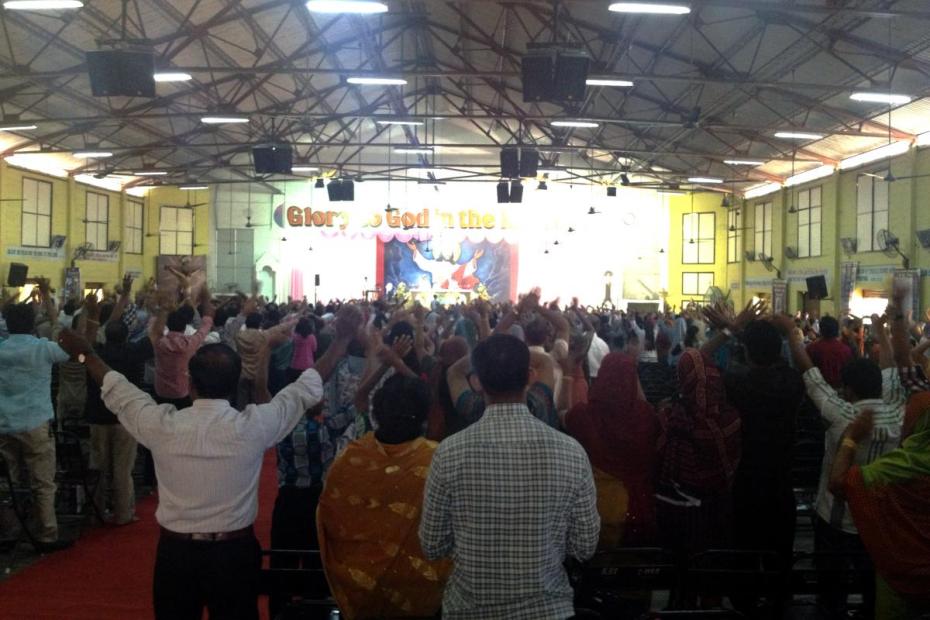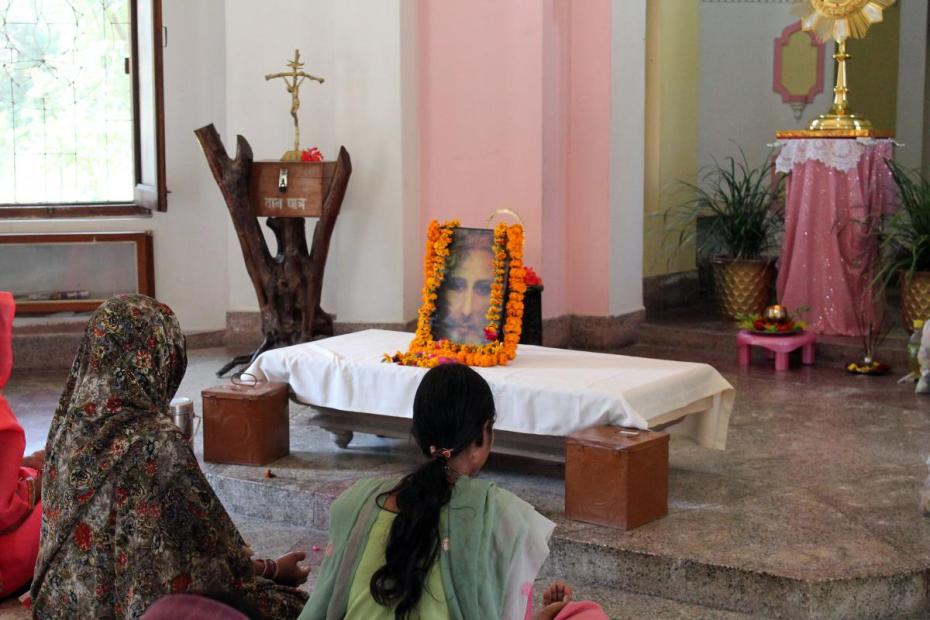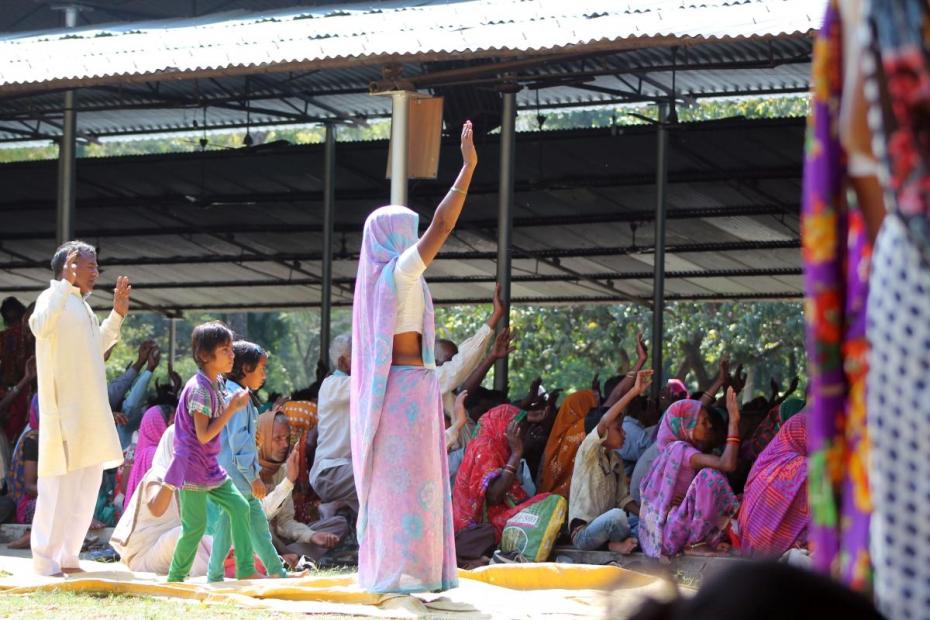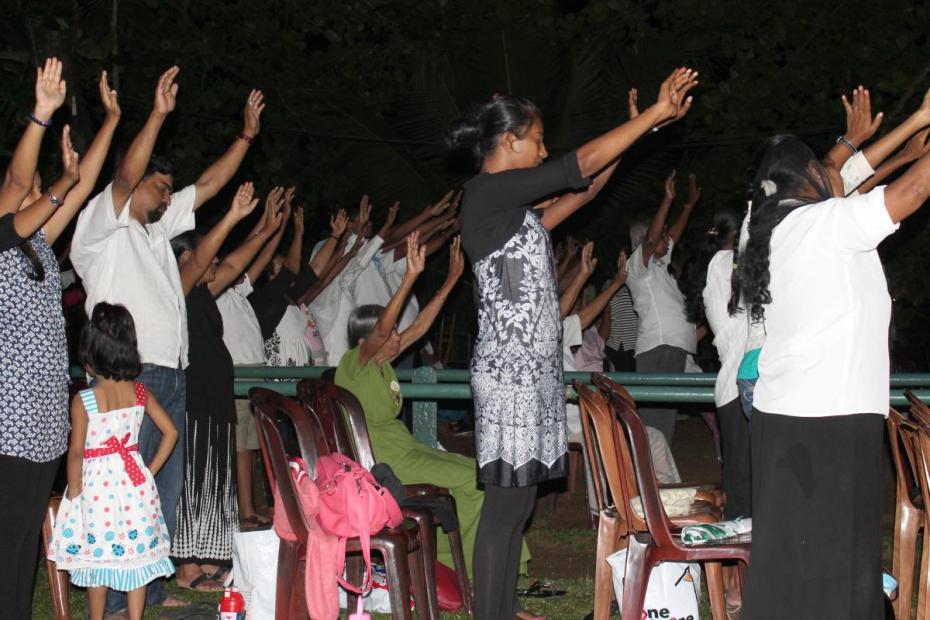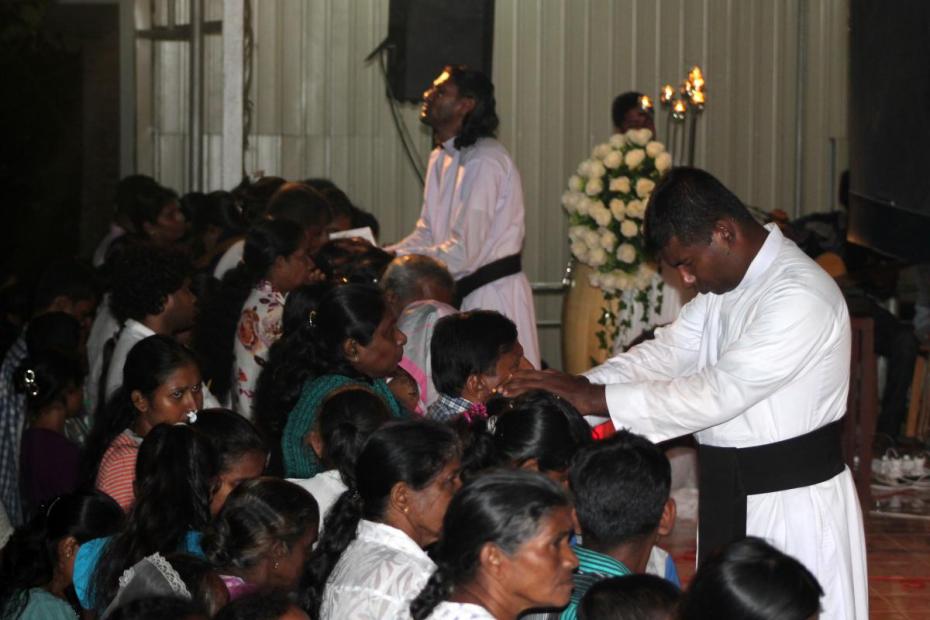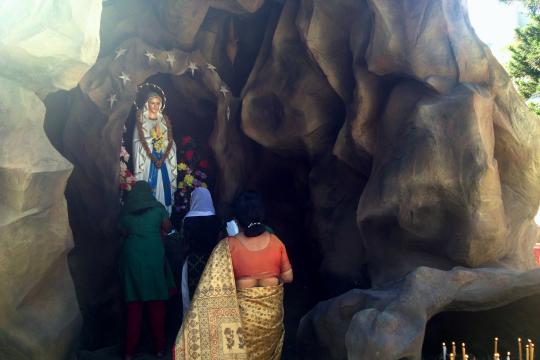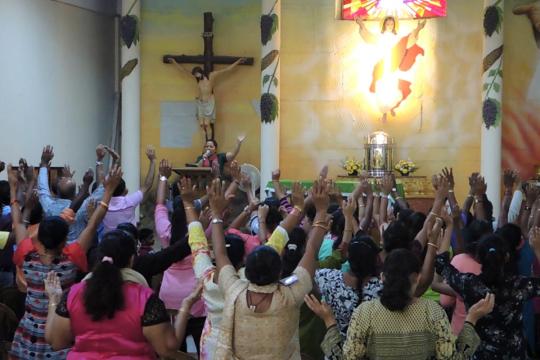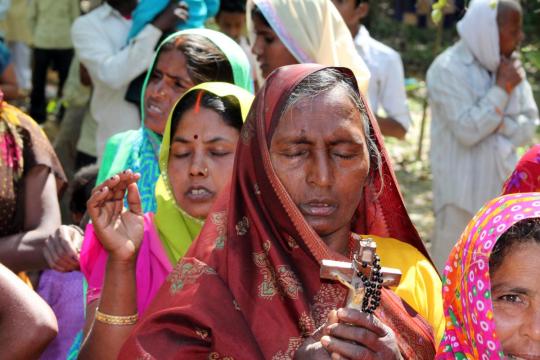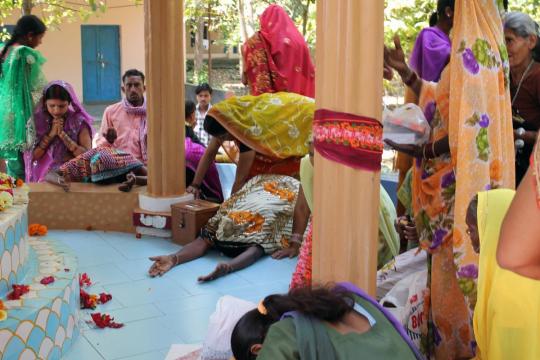The beginnings of the Catholic charismatic movement are often located in a period during the late 1960s, when Catholics received “the baptism of the Holy Spirit” during retreats and conferences at Duquesne and Notre Dame Universities.1 Scholarship on the development of charismatic Catholicism in the United States has emphasized how it represents a new articulation of Catholic identity by promoting the agency of Catholic laity as healers, prophets, and individual recipients of God’s healing power.2
Studies of charismatic Catholicism on the Indian sub-continent and other parts of the non-Western world have extended this emphasis upon Catholic identity by focusing on how charismatic religiosity either appropriates indigenous forms of healing,3 or serves to marginalize and exclude a competing religious other,4 or both depending on the performative context.5 Scholars like Thomas Csordas, who have examined charismatic Catholicism more broadly, have speculated on how the fundamental “spirit” of Pentecostalism relates to the “spirit of monopoly capital.”6 In a similar vein, Simon Coleman has referred to a “globalized habitus” in charismatic religiosity, reflected in an expansive agency that projects a “mobile inspired self into the world.”7 In these ways, charismatic religiosity can be seen to embody a nascent entrepreneurial attitude that emphasizes individual adaptability and spiritual, if not material, acquisitiveness.
Charismatic Catholicism came to India in the early 1970s with a Fordham-educated Parsi convert to Catholicism named Minoo Engineer who, along with two American-educated Jesuits, started prayer groups in Bombay that later spread throughout Maharashtra and South India.8 The popularity of charismatic Catholicism on the Indian subcontinent might seem initially to embody a paradox: it is seemingly the most Western form of religiosity but it is the form of Christianity that involves Indians—both Christian and Hindu—the fullest. But superficial appearances can be deceiving, especially depending upon how one characterizes Indian sensibilities vis-à-vis those apparent in Western religiosity. As made clear in the entries on the Catholics & Cultures site, charismatic Catholic religiosity on the Indian sub-continent is multi-faceted: it is deployed according to specifically Indian registers of meaning while simultaneously retaining its connection to the globalizing dynamics that scholars have identified in Catholic charismatic renewal’s worldwide spread.
Indic themes and practices
The Catholics & Cultures site introduces four important sites for Catholic charismatic renewal on the Indian subcontinent: The Kudagama Divine Mercy Retreat Centre is in Sri Lanka; The Divine Light Retreat Centre, Muringoor, and The Renewal Retreat Centre in Bangalore are in South India; Matridham Ashram is in North India. All of these sites share aspects that scholars have routinely identified in their studies of charismatic Catholicism worldwide. But it is also important to emphasize that something more is going on at these sites besides the importation of a globalized, and globalizing, inspired “Protestant self.”
Public charismatic Catholic services in India usually have a standard structure that relies upon sermons based upon Biblical themes. During these sermons, the audience will also be encouraged to recite key phrases and exhortations from scripture. While this structure is pervasive in all contexts, it resonates differently depending on the audience. For example, at Matridham, most of participants would not be familiar with the specific vocabulary of the Hindi translation of the Bible. While exhortations in basic Hindi would be comprehensible, there is certainly not a seamless connection between the content of the sermons and the apprehension of the audience. However, at Kudagama, Divine Light, and the Renewal Retreat Centre, Bibles predominate and are often referred to and consulted in English and a variety of other Indian languages.
Following each sermon will usually be a personal testimony of healing that will be calibrated to the specific sensibilities or experiences of the audience. For example, at Kudagama, Divine Light, and the Renewal Retreat Centre concerns of the aspiring middle class are most apparent: financial well-being; marriage difficulties; addiction to alcohol. At Matridham, physical healings are emphasized as well as giving up belief in ghosts and renouncing indigenous forms of healing that are otherwise characterized as “black magic.”
Interspersed throughout the service are Catholic charismatic songs. There is a large—and growing—repertoire of original Catholic charismatic songs in a variety of Indian languages. Additionally, songs in English, like John Michael Talbott’s “Let the Fire Fall,” will be sung during services where the majority of participants are multi-lingual. At the end of each service there is usually the laying on of hands. In order to prepare for this act of healing, at Kudagama and the Divine Light Retreat Centre, Catholics are required to go to confession first.
The general structure of a Catholic charismatic prayer service in India would be familiar to anyone involved in worldwide charismatic religiosity, whether in its Catholic or Protestant forms. Charismatic Catholic services continually and consistently emphasize the Bible as a text that effectively encompasses the entirety of space and time. Thus, to be a Catholic charismatic is not only to have one’s experiences “entexted” but also to be part of extending and embodying the sacrality of the text in engagement with the broader world. In this sense, the notion of the single believer having an inspired agency is particularly relevant as is the obvious fact that lay charismatic Catholics are claiming for themselves a power once reserved to priests alone.
While there are numerous points of contact between Indian forms of Catholic religiosity and those in other cultural contexts, aspects of Indian religious culture are also clearly apparent—and decisive—in the structure of meaning that charismatic prayer services set forth. The most important theme in Indian charismatic Catholicism is darśan, literally “seeing” the divine. A monstrance with an exposed Eucharistic host stands as the visual center in each of the prayer services and is usually framed by colorful lights and banners. In Indian religious culture “seeing” is closely related to “touching” and so being in the presence of a consecrated host—the body, blood, soul and divinity of Jesus—enhances the already spiritually charged context of the prayer service itself.
Along with the emphasis on the power of sight there is a reciprocal emphasis upon the power of words. For example, even at Matridham where the scriptural aspects of charismatic religiosity would be less important, there is an emphasis upon the divine name of Jesus as itself powerful enough to bring healing. Such a belief in the transformative power of words hearkens back to traditional Hindu beliefs in mantras—sound syllables or phrases—that are conduits of divine power, regardless of whether or not the person uttering the mantra understands its meaning.
In the end, however, it is perhaps the theme of touching and being touched resonates most strongly in an Indian context. At the end of the service, charismatic leaders, both priests and lay leaders, will lay their hands upon each of the assembled pilgrims. In Matridham, for example, pilgrims draw heavily not from the middle class but from local Dalit castes for whom touching and being touched were often prohibited.9 The healing that comes from participating in the service is then not just about its thaumaturgical elements, but also about being recognized as a full human being.
From improvisation to homogenization
In the 1980s and 1990s, Charismatic prayer services on the Indian sub-continent were much more freewheeling and improvisational. At Kudagama, for example, head priest Camillus Jayamanne used to cast out demons that were also associated with particular Buddhist spirits.10 In India, the Matridham charismatic prayer team also used to cast out demons associated with local Hindu deities.11 Sometimes beatings would be administered as part of the healing process—something which Hindu healers also do quite regularly. Additionally, healers associated with Matridham would practice what was called “charismatic counseling” in which they would reveal the hidden—and often sexually charged—sins of their supplicant clients and ask them to confess publicly or to a priest.12
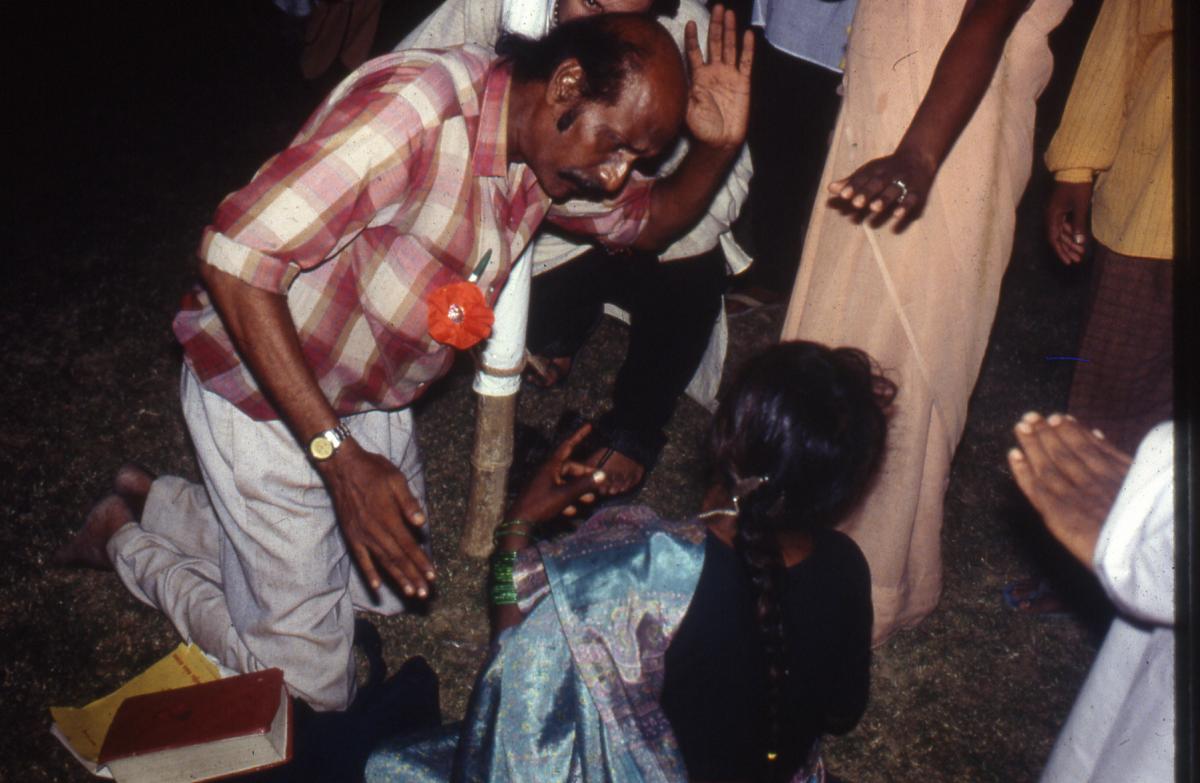
The Indian and Sri Lankan charismatic prayer services discussed by the Catholics & Cultures site are relatively much more uniform or homogenous as compared to previous decades. Partly, this is a result of the rise of the internet and social media that has allowed facilitated global connections among religious groups. In this sense, charismatic prayer groups in India are part of larger multi-national networks. Yet it is also the case that the hierarchy of the Catholic Church, in India as elsewhere, has moved to rein in the most exuberant forms of lay charismatic expression in order to reassert hierarchical boundaries and the sacramental preeminence of the priest.
- 1See René Laurentin, Pentecôtisme Chez les Catholiques (Paris: Beauchesme, 1974); and Edward O’Connor, The Pentecostal Movement in the Catholic Church (Notre Dame: Ave Maria Press, 1971). For a quick, basic overview see Mathew N. Schmalz, “What Is Charismatic Catholicism,” The Conversation, Sept. 25, 2020, https://theconversation.com/what-is-charismatic-catholicism-146741.
- 2See Thomas J. Csordas, The Sacred Self: A Cultural Phenomenology of Charismatic Healing (Berkeley: The University of California Press, 1992); Meredith McGuire, Pentecostal Catholics: Power, Charisma, and Order in a Religious Movement (Philadelphia: Temple University Press, 1982); and Meredith McGuire, Ritual Healing in Suburban America (New Brunswick: Rutgers University Press, 1988).
- 3S.E. Ackerman, “Language of Religious Innovation: Spirit Possession and Exorcism in a Malaysian Catholic Pentecostal Movement,” Journal of Anthropological Research 37 (1981): 90-199.
- 4Robert L. Stirrat, “Demonic Possession in Roman Catholic Sri Lanka,” Journal of Anthropological Research 33 (1977): 133-57; Robert Stirrat, Power and Religiosity in a Post-Colonial Setting (Cambridge: Cambridge University Press, 1992).
- 5Mathew N. Schmalz, “Boundaries and Appropriations in North Indian Charismatic Catholicism,” Engaging South Asian Religions: Boundaries, Appropriations and Resistances, eds. Mathew N. Schmalz and Peter Gottschalk (Albany: SUNY Press, 2011), 85-112.
- 6Thomas J. Csordas, “Religion and the World System: The Pentecostal Ethic and the Spirit of Monopoly Capital,” Dialectical Anthropology 17 (1992): 135-156.
- 7Simon Coleman, The Globalization of Charismatic Christianity: Spreading the Gospel of Prosperity (Cambridge: Cambridge University Press, 2000).
- 8Stanley M. Burgess, “Pentecostalism in India: An Overview,” Asian Journal of Pentecostal Studies 4 (2001): 85-98.
- 9See Mathew N. Schmalz, “The Faith and Rationality of Dalit Christian Experience,” Asian Horizons [Dharmaram Pontifical Athenaeum, Bangalore] 5 (March 2010): 24-35; Mathew N. Schmalz, “The Broken Mirror: John Masih’s Journey from Isai to Dalit,” Margins of Faith: Dalit and Tribal Christianity in India, eds. Rowena Robinson and Joseph Marianus Kujur (Delhi: Sage Publications, 2010), 185-210; and Mathew N. Schmalz, “Dalit Christian Pentecostalism in a North Indian Village,” Dalit International Newsletter 7 (October 2002): 7-9.
- 10See Stirrat, “Demonic Possession,” and Power and Religiosity in a Post-Colonial Setting.
- 11See Mathew N. Schmalz, “Charismatic Transgressions: The Life and Work of an Indian Catholic Healer,” Popular Christianity in India: Riting Between the Lines, eds. Selva J. Raj and Corrine Dempsey (Albany: SUNY Press, 2002), 163-87.
- 12See Mathew N. Schmalz, “A Catholic Charismatic Healer at Play in North India,” Sacred Play: Ritual Levity and Humor in South Asian Religions, eds. Selva J. Raj and Corinne G. Dempsey (Albany: SUNY Press, 2010), 185-204.
